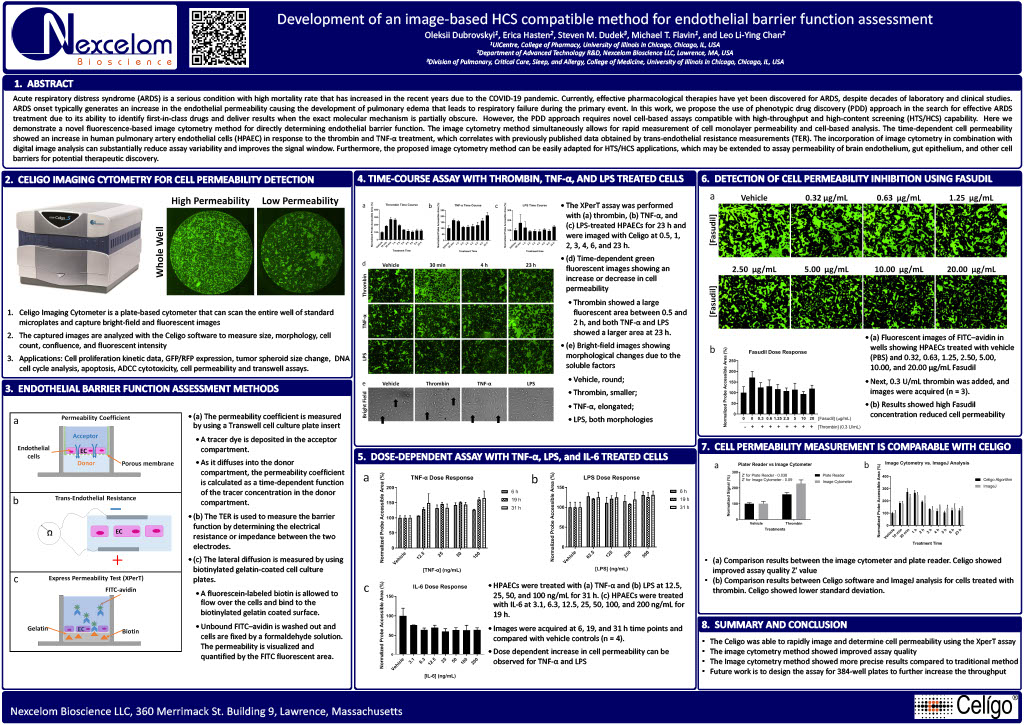Development of an image-based HCS compatible method for endothelial barrier function assessment
Oleksii Dubrovskyi, Erica Hasten, Steven M. Dudek, Michael T. Flavin, and Leo Li-Ying Chan
Acute respiratory distress syndrome (ARDS) is a serious condition with high mortality rate that has increased in the recent years due to the COVID-19 pandemic. Currently, effective pharmacological therapies have yet been discovered for ARDS, despite decades of laboratory and clinical studies.
ARDS onset typically generates an increase in the endothelial permeability causing the development of pulmonary edema that leads to respiratory failure during the primary event. In this work, we propose the use of phenotypic drug discovery (PDD) approach in the search for effective ARDS treatment due to its ability to identify first-in-class drugs and deliver results when the exact molecular mechanism is partially obscure. However, the PDD approach requires novel cell-based assays compatible with high-throughput and high-content screening (HTS/HCS) capability.
Here we demonstrate a novel fluorescence-based image cytometry method for directly determining endothelial barrier function. The image cytometry method simultaneously allows for rapid measurement of cell monolayer permeability and cell-based analysis. The time-dependent cell permeability showed an increase in human pulmonary artery endothelial cells (HPAEC) in response to the thrombin and TNF-α treatment, which correlates with previously published data obtained by trans-endothelial resistance measurements (TER).
The incorporation of image cytometry in combination with digital image analysis can substantially reduce assay variability and improves the signal window. Furthermore, the proposed image cytometry method can be easily adapted for HTS/HCS applications, which may be extended to assay permeability of brain endothelium, gut epithelium, and other cell barriers for potential therapeutic discovery.

